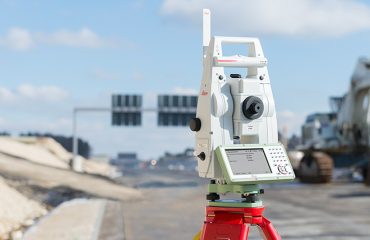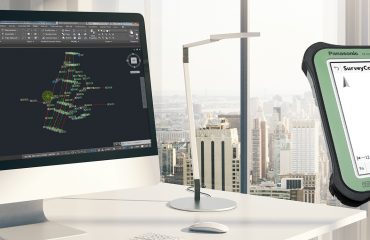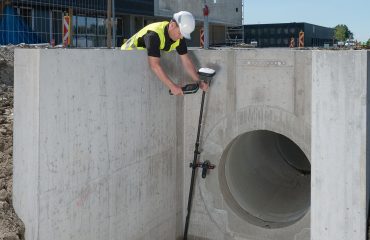Improved speed and accuracy are a given, but these other benefits spark a new level of excitement about the future of surveying.
By Jason Houle
As a professional licensed land surveyor for more than 25 years, I’ve seen a lot of technology advances in my career. Some of these innovations, like laser scanning, have been truly revolutionary because of the impact they’ve had on how surveyors approach their work. But for accuracy and simplicity, a total station, which may have laser scanning functionality, remains the primary instrument in a surveyor’s toolbox.
While the move from manual to robotic instruments has provided a significant improvement in productivity, the need to level the prism pole and measure its height has placed constraints on the overall speed and allowed for the potential of errors in a survey. So, when I learned about the new Leica AP20 AutoPole with tilt compensation, automatic pole height, and automatic target ID recognition, I was understandably intrigued.
“My first approach with any new technology is to put it to the test, and the AP20 was no exception.”
As a surveying technology sales and support representative for Leica Geosystems, it’s my job to guide surveyors and engineers in technology adoption. With my professional reputation on the line, I will never recommend a technology that doesn’t prove its performance in the challenging real-world applications you deal with every day. My first approach with any new technology is to put it to the test, and the AP20 was no exception.
While the AP20 consistently delivers productivity gains, eliminates the possibility for rod height errors, and can identify a unique target ID during searches, three other advantages stand out to me as having an even bigger impact.
1. Enhanced Safety
Being able to stay alert to your surroundings rather than having your attention focused on the pole to capture a shot is a significant benefit when working around roadway traffic or on busy construction sites. Additionally, when you’re tying in a feature that’s buried or in a trench, you no longer must lean over the trench and level the rod; with the tilt capabilities of the AP20, you just touch the tip to the point and measure it.
2. Ability to Measure Obstructed Points on the Fly
ALTA surveys and other surveys often require tying in obscure but crucial features. This typically means setting additional control points or using more instrument occupations, which extends the field time and increases risks. With the tilt capabilities of the AP20, you can measure obstructed features quickly and easily.
3. Measurable Value for Everyone
The real wow factor for me is the ability of the AP20 to deliver measurable value for everyone across the spectrum, from the small one-person boundary surveying firm to large firms delivering large-scale surveying and engineering projects. The ease of use, time savings from the tilt capabilities, accuracy gains from the automatic rod height measurements, safety benefits, ability to measure obstructed points … all of these benefits add up to a more productive and reliable workflow. As firms continue to struggle to fill positions for personnel, the productivity gains provided by technologies like the AP20 can help bridge the gap and allow your company to remain competitive and profitable.
As I consider all the surveying technology advances that have occurred over the last few decades, the AP20 is at the top of my list. But don’t take my word for it. Check it out for yourself and put it to the test in your own applications. Let me know what you think.
About the Author:

Jason Houle has 25 years of experience in surveying/geomatics and civil engineering in roles ranging from survey technician and crew chief to project manager and business owner. As a sales and support representative for Leica Geosystems, part of Hexagon, Jason Houle works with surveying and engineering professionals throughout Wisconsin, Iowa, and Nebraska to evaluate and implement game-changing innovations that have a dramatic impact on productivity, efficiency, and quality. His ability to combine creative problem solving with a pragmatic approach have made him the go-to resource for solving complex challenges. Follow Jason on LinkedIn.
To talk to one of our experts and learn more about ways to optimize your surveying potential, please contact us.




